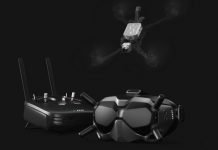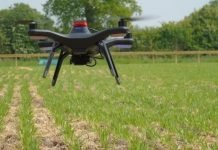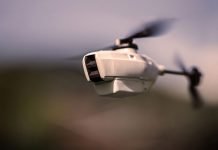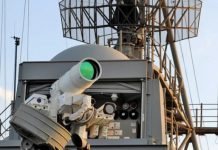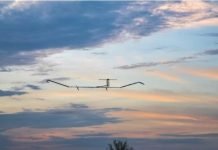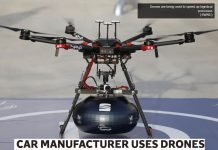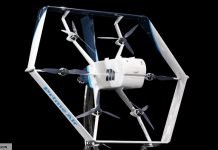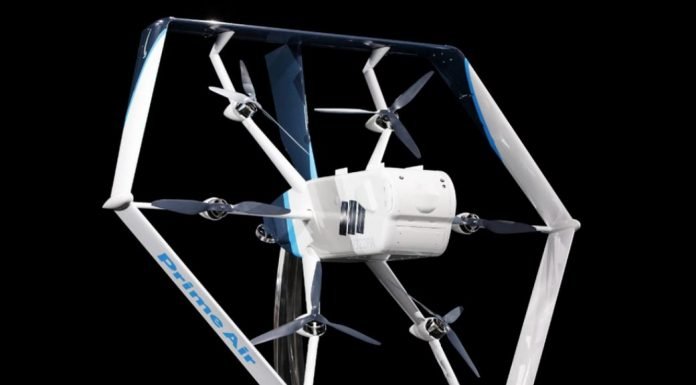
Never has it been so easy to capture aerial images of some of the world’s most stunning (and sometimes hard to reach) places. The drone—a sky-high flying, unmanned camera—is undoubtedly the wildest photography development in recent memory. Almost like a remote-controlled toy for the photo obsessed, drones are as much fun as they are revolutionary.

As the desire for drones has risen, the price has dropped, making it easier than ever to get a camera in the air. But with so many factors to consider—whether you’re just planning to get into drone photography or have already gotten one—getting started can be a challenge.
From choosing a set-up to post-processing photos, take these nine tips with you on your journey to drone photography:
01. Choose a drone based on your needs and skills
One search of “drone” in Google will shock you with the mind-boggling number of drones available out there. But what are the things you actually need to consider in getting one for yourself?
The two most common types of drones you can choose from are those with a built-in or on-board camera and those of which you can attach your own. Drones with a built-in camera are often larger, and their cameras might not have a very high resolution—which can compromise the quality of your photos. Smaller drones which allow you to attach your own camera, such as a GoPro, on the other hand, could be easier to manage since you already have the hang of your camera and really only need to learn how to fly.

One of the most important things to consider is how well you can fly a drone. For beginning drone photographers, sturdier, lighter, and cheaper drones are available. They aren’t as expensive as heavier and more advanced drones either because they have less features. Look for a drone that matches your skill.
You also need to know what your drone can do. For instance, some drones can only be flown indoors. Some drones are also equipped with lighting that can be used for shooting at night. Some fly farther than others. Decide what you want to achieve with your drone, check out the features of the drones you are choosing from, then choose one that best satisfies your needs.

Channels like That Drone Show and Drone Camps RC on YouTube test, review, and compare different drones and accessories. You might consider watching the videos before purchasing your drone.
02. Study the instruction manual carefully
Reading the instruction manual is nowhere near as exciting as soaring your camera over the ocean, but if you want to give yourself the best chance of nailing drone photography, get to studying.

Your instruction manual holds everything you need to know about your new drone. It will give you the answers to a bunch of questions you might not have even known you had. Knowing what your drone can and cannot do, you’ll be spending less time tinkering with it and more time improving your shots.
03. Understand the features of your drone
Drones offer various features that help optimize your flying time. Learning these will ensure you shoot efficiently with your drone.
While they vary for each brand and type of drone, these are the typical features you will encounter:
Smartphone Feed

This tool is great for beginners as it allows you to see exactly what your drone is capturing, increasing your chances of a great shot.
Smart Mode
Smart mode essentially translates to “beginner mode.” This innovation is put in place to essentially help newbies get the most out of their shots.
For example, if you’re inexperienced and it’s a windy day, chances are you won’t have the chops to fly your device without it looking like your photos were caught up in an earthquake. Smart mode will have some form of stabilisation feature that will help to counter this.
Tracking
Drones sometimes also have a “follow-me” option. This combines futuristic visual recognition with your smartphone’s GPS to help you take the perfect photo.

If you want yourself in the shot, this technology will allow it: put your phone in your pocket, turn on the “follow-me” option, and the drone will make sure that you’re always in the frame.
Geofence
A geofence will restrict how far and how high your drone flies. Essentially, it locks your drone in an invisible jail, and the minute you try to escape, you’ll run into trouble.
Drone photographers have varying opinions on these features—some find them useful, and others don’t. Find out which features you can use to maximize your drone’s potential.
04. Learn the federal, state, and local drone regulations
Because of how many people have gotten into these little unmanned aircrafts, there’s been a lot of developments into the legality of where, how, and who can pilot one.

For instance, in the USA, UAVs weighing between 0.55 and 55 lbs. require a Federal Aviation Administration (FAA) registration. This means that before you take to the sky, you must make your aircraft known—much like registering a car. It’s a simple process: just hand over a small fee and your name, address, and email.

There are also regulations on where you can fly your drone. For example, you (fairly obviously) can’t go flying your drone around another aircraft, so airports are a no-no.
Whilst most laws and regulations are quite obvious and easy to understand, a lot are still quite messy—especially surrounding fines. The laws surrounding registration also vary for every country. The best thing to do is to take the time to check the legality of drones (which you can do online) before you launch your camera.
05. Prepare a pre-flight checklist
Knowing what your drone can do and where you can fly it, you’d think it’s time to finally get it in the air, but before you do that, it’s advisable to first devise a pre-flight checklist. A pre-flight checklist will not only ensure that you have everything you need before you fly but also that everyone around you, including your drone, will be safe.

Before you fly, check these things off the list:
- Fly Zone: Where are you going to fly? Is it private or public domain?
- Weather: Are flying conditions good? Will you need to utilize anti-stabilization because of the wind?
- Surroundings: Will there be people around at this time of day? Will it be safe to fly low/high? Will they mind a drone hovering around them?
- Battery: Have you charged up all your batteries? How long can you stay in the air?
- Settings: What resolution do you need? How bright do you need to set your camera? What frame rate, shutter speed, and ISO are best for what you want to achieve in your photo?
- Propellers: How are your propellers looking? Are they nice and straight, or do they need replacing?
- Motor: is the motor and mounts in tact? Are the motors rotating freely? Is it making any unrecognisable sounds? Are the screws tight?
- Controls: If you’re using a smartphone or tablet, is it ready to go for your flight? Are other apps turned off? Is the fully charged? If you’re using a remote control, does it have batteries? Is it responding to your drone?

With all these in check, now comes the exciting part—flying your drone.
06. Test drive your drone
Can you imagine spending a lot of time and money on a shiny new drone, hooking your expensive camera up to it, and then losing control and watching it plummet to the ground? Don’t set yourself up for tragedy—test drive your drone.

Every drone is different; thus, they all fly differently. Taking your new toy out to a big open area, like a field or park (keeping clear of large crowds of people, private buildings, and cars) will allow you to get the hang of the controls all while minimizing the risk of breaking or damaging your drone.

Just like other photography techniques, drone flying is all about practice, practice, practice. Learn how to fly your drone to get the most out of it.
07. Learn drone photography techniques
Now, there’s no point travelling to an amazing location and getting your camera in the sky, only to have a weirdly-framed, unclear photo. There’s an art to panning across beautiful scenery, which can only be learnt with time and testing.
Here are a few tips to keep in mind:
Don’t forget the “rules: ”Sometimes it’s easy to forget the fundamentals of photography when you’re flying, but they all still apply to the world of drones. If you’re not familiar with beginner techniques such as the rule of thirds, leading lines, and golden ratio, then get back to basics and study up.
Credits: canva


